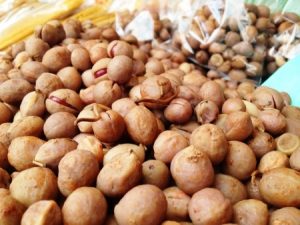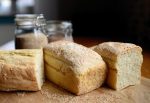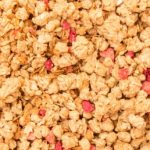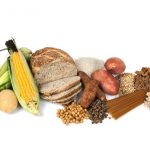- Bambara groundnuts should be better known !
The Bambara groundnut or Earth Pea (Vigna subterranean [L.] Verdc.) has recently been identified as a great source of fibre. This legume is readily grown throughout much of Asia, Southern and Central Americas, North Australia and most of Africa. One reason for its success is its ability to grow and tolerate rough, arid soils with little rainfall where other groundnuts would not succeed growing. Ironically, it has yet to be fully exploited because many of its nutritional properties are unrecognised.

The seed itself is high in protein (19% w/w) and carbohydrates (63% w/w) but lower in oil (6.5% w/w) content compared to other groundnuts (Brough et al., 1993; Bamishaiye et al., 2011). However, it has an excellent nutritional profile which suggests it would meet the dietary needs of many who could supplement with other more oil-rich groundnuts or foodstuffs (Jideani and Diedericks, 2014). Its fibre content might be its most important selling point.
Research is now examining some of the functional properties of Bambara – its flour, protein and starch contents (Adebowale and Lawal, 2004; Eltayeb et al., 2011). The predominant protein globulins are vicilin and SSP B (Okpuzor et al., 2009).
The most recent study assessed the insoluble dietary fibre faction of four varieties (brown, red, black eye and brown eye) for their functional ingredient potential. A functional product of white bread was manufactured using the nut’s fibre demonstrating an application for this ingredient (Diedericks and Jideani, 2015).
References
Adebowale, K.O., Afolabi, T.A., Lawal, O.S. (2002). Isolation, chemical modification, and physicochemical characterisation of bambara groundnut (Voandzeia subterranean) starch and flour. Food Chem. 78 pp. 305–11.
Adebowale, K.O., Lawal, O.S. (2004) Comparative study of the functional properties of bambarra groundnut (Voandzeia subterranean), jack bean (Canavalia ensiformis), and mucuna bean (Mucuna pruriens) flours. Food Res. Int. 37 pp. 355–65.
Bamishaiye, O.M., Adegbola, J.A., Bamishaiye, E.I. (2011) Bambara groundnut: an underutilized nut in Africa. Adv. Agr. Bio. 1 pp. 60–72.
Brough, S.H., Azam-Ali, S.N., Taylor, A.J. (1993) The potential of bambara groundnut (Vigna subterranea) in vegetable milk production and basic protein functionality systems. Food Chem 47 pp. 277–83.
Diedericks, C. F. and Jideani, V. A. (2015), Physicochemical and Functional Properties of Insoluble Dietary Fiber Isolated from Bambara Groundnut (Vigna subterranea [L.] Verdc.). J. Food Sci., 80: C1933–C1944. doi: 10.1111/1750-3841.12981
Eltayeb, A.R.S.M., Ali, A.O., Abou-Arab, A.A., Abu-Salem, F.M. (2011) Chemical composition and functional properties of flour and protein isolate extracted from Bambara groundnut (Vigna subterranean[L.] Verdc.). Afr. J. Food Sci. 5(2) pp. 82–90.
Jideani, V.A., Diedericks, C.F. (2014) Nutritional, therapeutic, and prophylactic properties of Vigna subterranea and Moringa oleifera. In: Oguntibeju O, editor. Antioxidant-Antidiabetic Agents And Human Health. Rijeka, Croatia: Intech Publishers. pp. 187–207. DOI: 10.5772/57338.
Okpuzor, H.A., Ogbunugafor, U., Okafor, U., Sofidiya. (2009) Identification of protein types in Bambara nut seeds: perspectives for dietary protein supply in developing countries. EXCLI Journal 9 pp. 17–28.



Leave a Reply